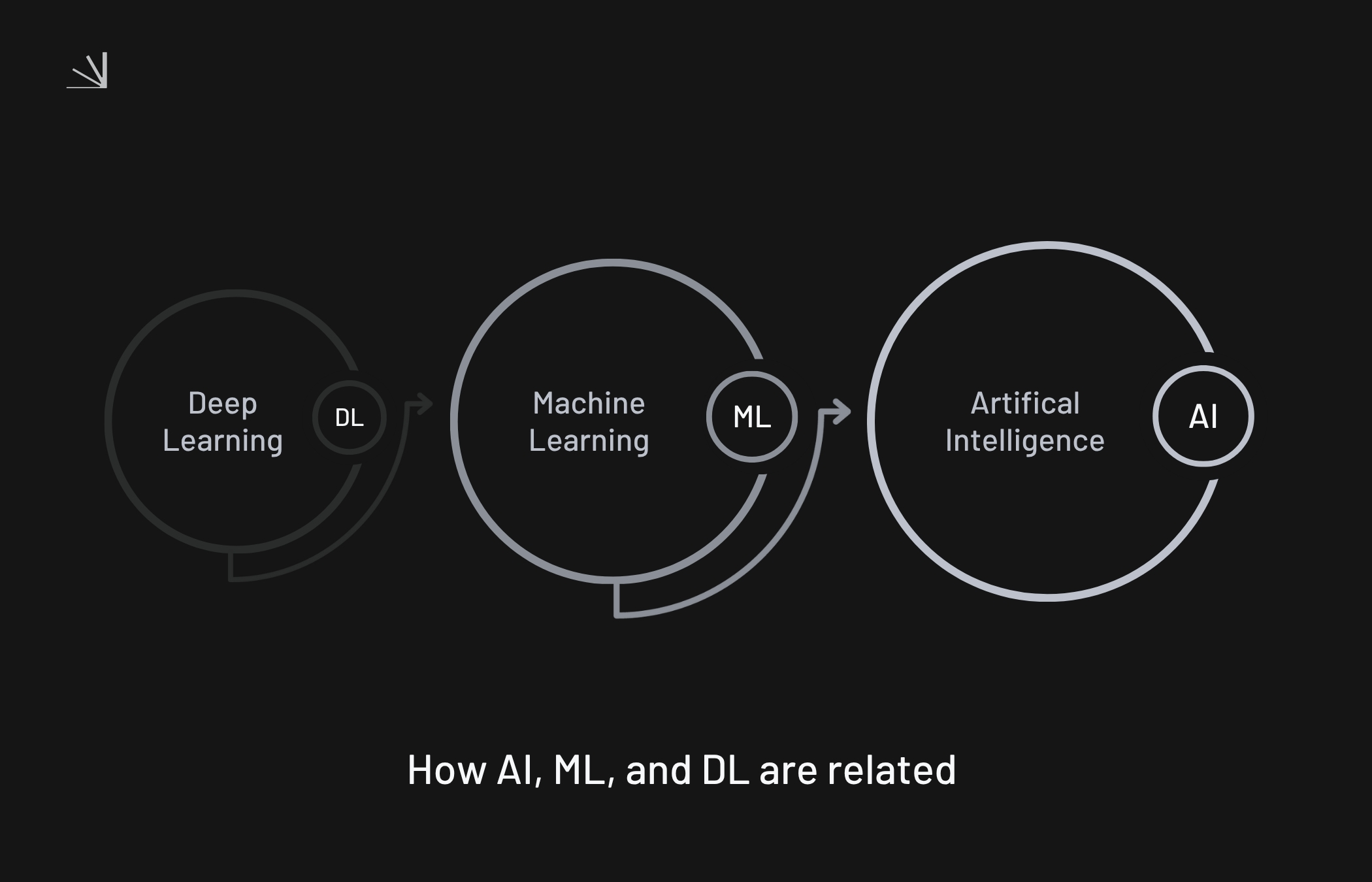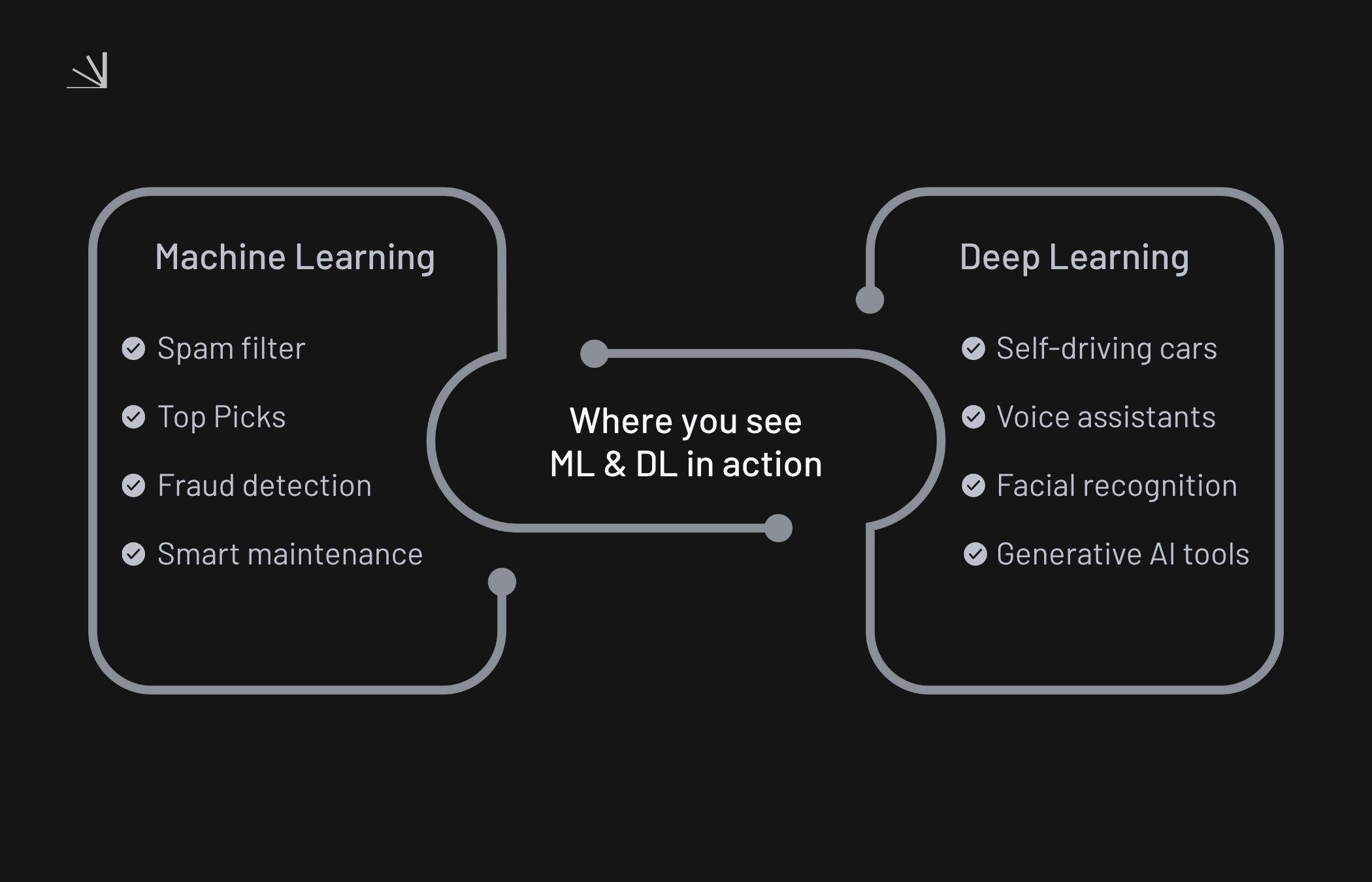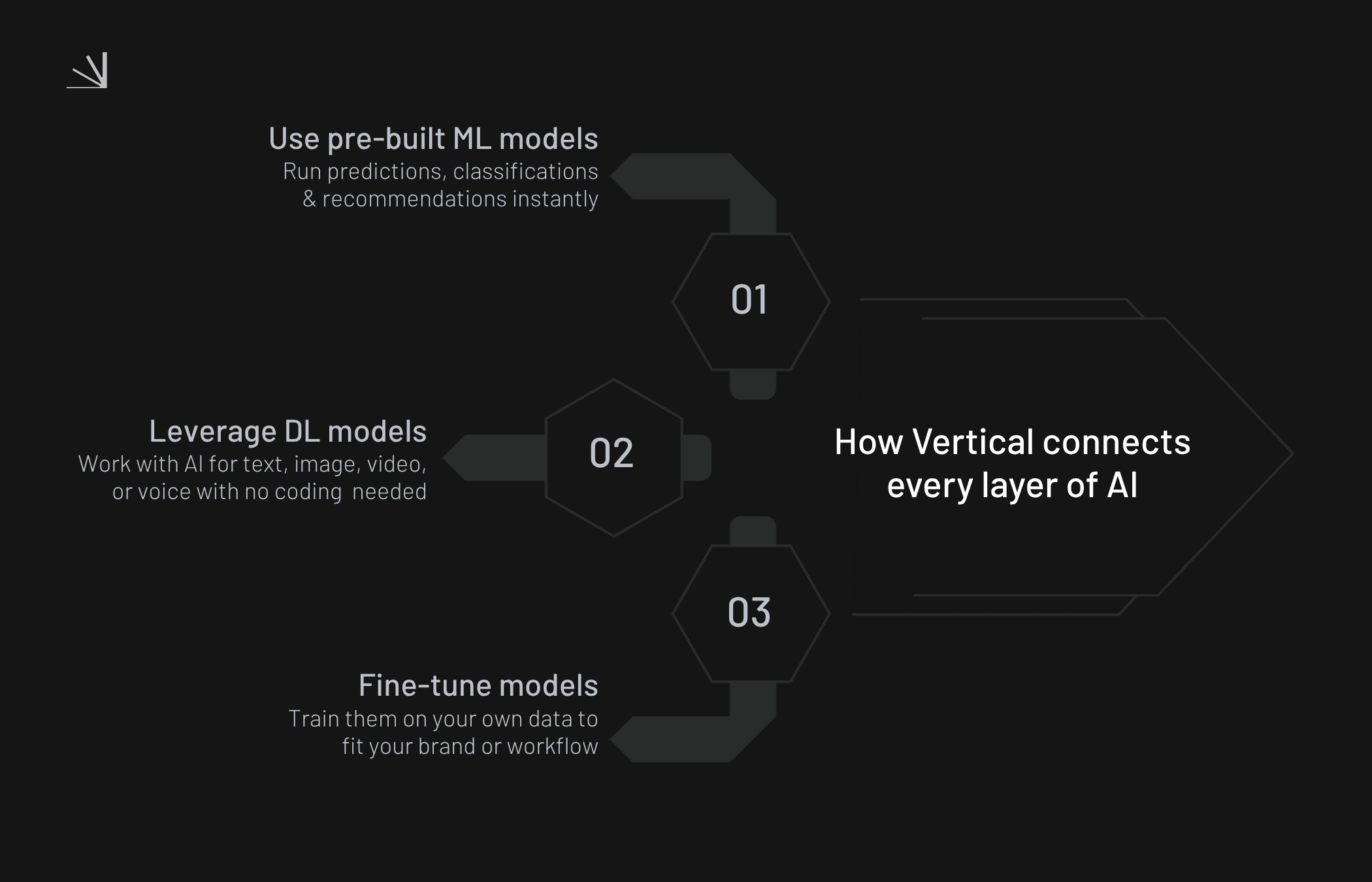Machine Learning vs Deep Learning: What you need to know
Published on October 10, 2025 · 10 min read

Artificial intelligence (AI) is a broad field that explores different ways of building systems capable of tasks we associate with ‘human’ intelligence. Hence the name Artificial Intelligence. Think of reasoning, decision making and recognizing patterns. Two of the most widely discussed approaches are machine learning (ML) and deep learning (DL). Although closely related, they are not identical and the differences matter.
In this article, we’ll start with a quick side-by-side explanation so you get a basic understanding of the essentials. Then we can dive deeper into what each approach really means, how they work, and the kinds of applications they power. By the end, you’ll have a clear, practical understanding of where ML and DL fit in the bigger AI picture.
The short answer: Machine Learning vs Deep Learning
Before diving in, it helps to understand the most basic forms of ML, DL and the thing that sets them apart, neural networks.
Machine learning finds patterns in data with relatively simple or shallow models.
Example: Netflix recommendations. The system studies what you’ve watched and predicts what you might enjoy next.
Deep learning takes this further, using many layered ‘neural networks’ to learn step by step and tackle very complex problems.
Example: self-driving cars that rely on cameras and sensors to “see” the road, recognize stop signs, and detect pedestrians.
Neural networks work through many connected layers, where each layer learns a small part and builds on the previous one.
Example: the first layer might spot simple lines, the next sees corners, and deeper layers combine them into objects like “cat” or “car.”
Feature | Machine Learning | Deep Learning |
Data Needs | Works with smaller, structured datasets | Requires large volumes of data |
Complexity | Simpler models, easier to set up | Complex neural networks, higher compute power |
Best For | Structured, pattern-based tasks (e.g. product recommendations) | Complex, unstructured tasks (e.g. image recognition) |
How AI, Machine Learning, and Deep Learning fit together
Now that we have defined the fundamentals, let's take a look at the relationships. It helps to picture AI as a nested hierarchy.
Artificial Intelligence: The umbrella term. AI is the broad field concerned with making machines capable of tasks that mimic human intelligence, such as reasoning, decision-making, or language understanding.
Machine Learning: A subset of AI. Instead of being programmed with fixed rules, ML systems learn patterns from data and use those patterns to make predictions or decisions. This is where AI shifts from being rule-based to becoming adaptive.
Deep Learning: A specialized subset of ML. What sets it apart is the use of layered neural networks, which break complex problems into many smaller steps. This allows DL to handle massive datasets and unstructured inputs like images, audio, and video.

Machine Learning vs Deep Learning: The key differences
We now know what ML and DL are and how they fit under the broader AI umbrella. But to really grasp the difference, it helps to look at how they actually operate in practice. Three areas in particular highlight their strengths and limitations: data requirements, speed and complexity, and accuracy and applications.
Data Requirements
ML models can work effectively with smaller, structured datasets. Think of spreadsheets or databases with clear labels. That makes ML approachable for many businesses that don’t have access to massive amounts of data.
DL, on the other hand, thrives on scale. It requires huge volumes of labeled data to train neural networks effectively. The more examples you give it (e.g. millions of images, hours of speech, or vast text corpora) the more accurate it becomes.
Speed and Complexity
ML models are ‘relatively’ simple, they’re fast to train and don’t demand much computing power. Many can be run on a standard laptop or modest server. This makes them ideal for quick deployment and experimentation.
DL is far more resource-intensive. Training can take days or weeks and often requires powerful GPUs or specialized hardware. While the payoff is greater capability, the upfront cost in time and infrastructure is much higher.
Accuracy and Applications
ML is strong for well-defined, structured tasks: scoring credit risk, segmenting customers, and predictive analytics. These use cases demand reliable, but not necessarily groundbreaking accuracy, and ML handles them well.
DL shines when the problem is too complex for simpler models. It outperforms ML in high-stakes scenarios like real-time image analysis, natural language processing, or speech recognition.
Real world applications
After having discussed the key differences, it becomes clearer why each is used in different applications. Their strengths, from data requirements to accuracy and complexity, explain where ML is the practical choice and where DL unlocks possibilities that simpler models can’t handle.
Machine Learning in action:
Email spam filters that learn which messages to block based on past labeling.
Product recommendations on e-commerce sites, personalized by your browsing and purchase history.
Fraud detection systems in banking, spotting unusual activity compared to normal customer behavior.
Predictive maintenance in manufacturing, where machines learn to recognize early signs of wear before breakdowns occur.
Deep Learning in action:
Self-driving cars interpreting camera and sensor data to navigate safely.
Voice assistants turning spoken words into actions.
Facial recognition systems identifying people in photos.
Generative AI models creating text, images, or even video content.
Which one should you care about?
The answer depends on your goals and your data.
If you’re working with structured datasets and want interpretable results, machine learning is often the better fit.
If your use case involves unstructured data (like video, images, or natural language) and accuracy is paramount, deep learning may unlock more value.
In practice, businesses rarely choose one over the other. Instead, they use both ML and DL, applying the right tool for the right task.
Where Vertical Fits In
Machine learning and deep learning are powerful in theory — but the real value comes from being able to use them in practice. That’s exactly what Vertical enables.
With machine learning models (like ChatGPT, Claude, Deepseek), you can run tasks like predictions, classifications, and recommendations right out of the box.
With deep learning models (e.g., for image, video, audio, natural language), you can work with cutting-edge AI systems for text, image, video, and speech, without needing to build one yourself.
With fine-tuning, you can adapt a deep learning model to your own domain, creating specialized AI that reflects your industry data, style, or workflows.
On Vertical, these fine-tuned models can then be shared in a credit-based marketplace. This creates an ecosystem where users benefit from ready-made ML and DL models, while creators turn their expertise into AI tools others can use.






